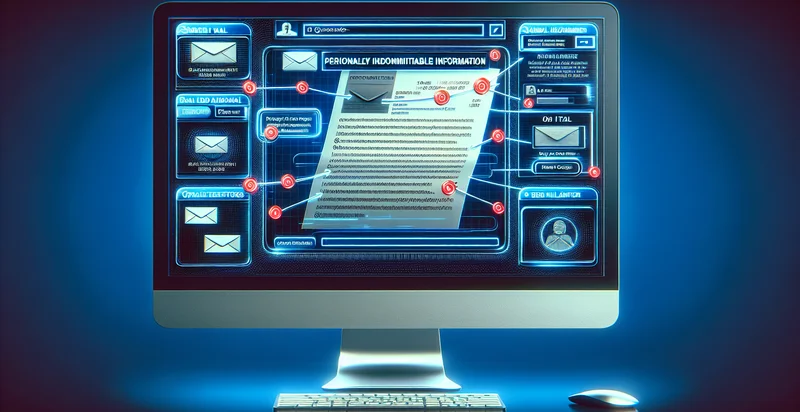Identify if PII is in a message
using AI
Below is a free classifier to identify if PII is in a message. Just input your text, and our AI will predict if personally identifiable information is present - in just seconds.

Contact us for API access
Or, use Nyckel to build highly-accurate custom classifiers in just minutes. No PhD required.
Get started
import nyckel
credentials = nyckel.Credentials("YOUR_CLIENT_ID", "YOUR_CLIENT_SECRET")
nyckel.invoke("if-pii-is-in-a-message", "your_text_here", credentials)
fetch('https://www.nyckel.com/v1/functions/if-pii-is-in-a-message/invoke', {
method: 'POST',
headers: {
'Authorization': 'Bearer ' + 'YOUR_BEARER_TOKEN',
'Content-Type': 'application/json',
},
body: JSON.stringify(
{"data": "your_text_here"}
)
})
.then(response => response.json())
.then(data => console.log(data));
curl -X POST \
-H "Content-Type: application/json" \
-H "Authorization: Bearer YOUR_BEARER_TOKEN" \
-d '{"data": "your_text_here"}' \
https://www.nyckel.com/v1/functions/if-pii-is-in-a-message/invoke
How this classifier works
To start, input the text that you'd like analyzed. Our AI tool will then predict if personally identifiable information is present.
This pretrained text model uses a Nyckel-created dataset and has 2 labels, including Contains PII and Does Not Contain PII.
We'll also show a confidence score (the higher the number, the more confident the AI model is around if personally identifiable information is present).
Whether you're just curious or building if PII is in a message detection into your application, we hope our classifier proves helpful.
Related Classifiers
Need to identify if PII is in a message at scale?
Get API or Zapier access to this classifier for free. It's perfect for:
- Customer Support Automation: Organizations can implement PII identification in customer support messages to automatically flag and anonymize sensitive information before processing. This helps maintain compliance with data privacy regulations while ensuring that customer requests are managed efficiently.
- Data Breach Detection: Employing a PII identifier within company communications can help identify potential data leaks or breaches in real-time. By scanning outgoing and incoming messages, organizations can quickly respond to and mitigate risks associated with unauthorized disclosure of sensitive information.
- Compliance Monitoring: Businesses can use a PII detection tool as part of their compliance monitoring processes to ensure that employees do not inadvertently share sensitive information over email or messaging platforms. This continuous scanning can act as a safeguard against non-compliance policies.
- Marketing Consent Verification: During interactions with potential customers, the PII identifier can be used to verify that consent is obtained appropriately before requesting personal information. This ensures adherence to regulations like GDPR and helps maintain customer trust.
- Risk Management in Training: Companies can utilize PII identification in training materials and internal communications to assess how well employees adhere to data privacy policies. By evaluating the frequency and context in which PII appears, organizations can tailor training programs to address knowledge gaps.
- Third-Party Vendor Management: Organizations can implement PII tracking when sharing data with third-party vendors to ensure that no sensitive information is transmitted without necessary precautions. This reduces the risk of liability and strengthens partnerships with vendors.
- Sentiment Analysis Enhancement: Implementing a PII identifier in sentiment analysis tools can help organizations filter out irrelevant or sensitive PII content, leading to more accurate assessments of customer feedback and public opinion. This results in more focused insights and better decision-making aligned with customer sentiment.


